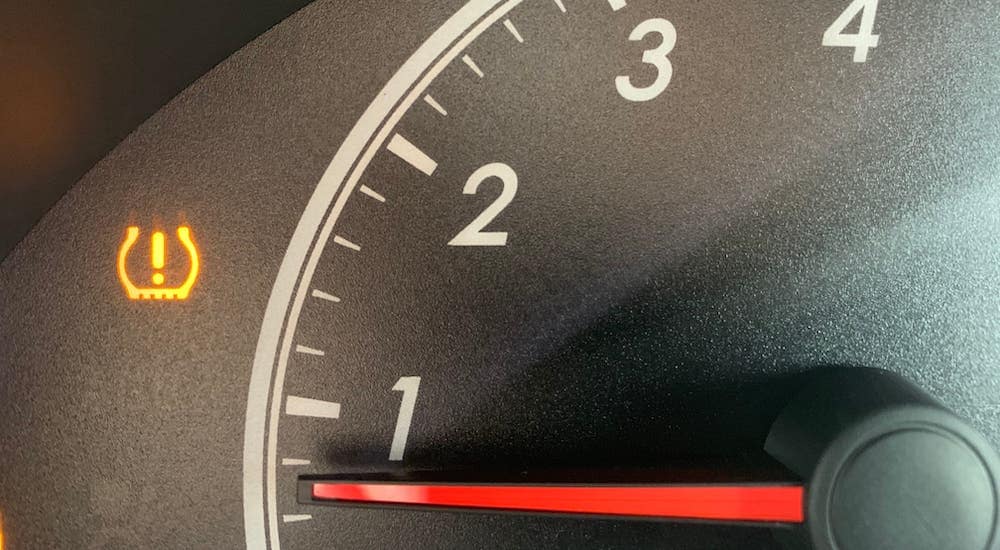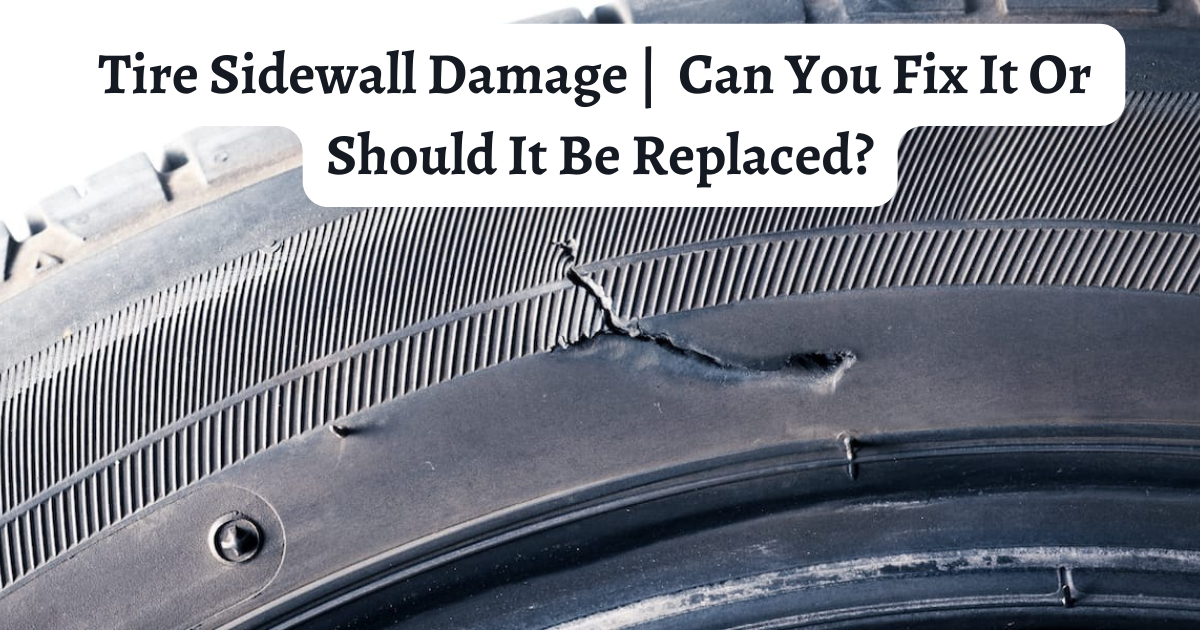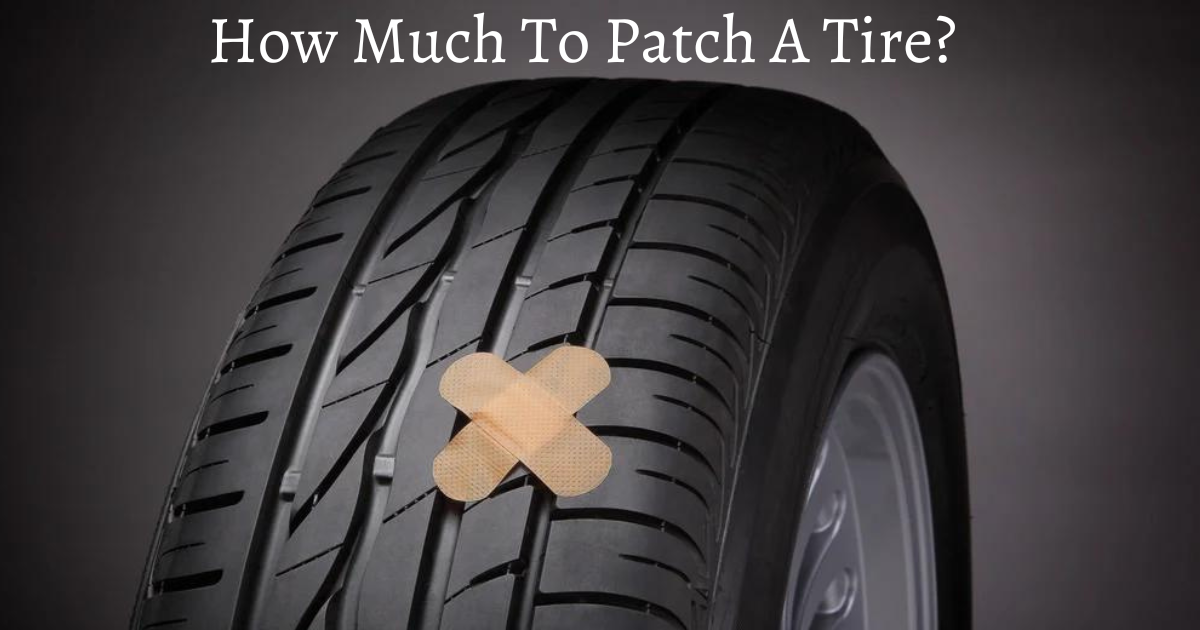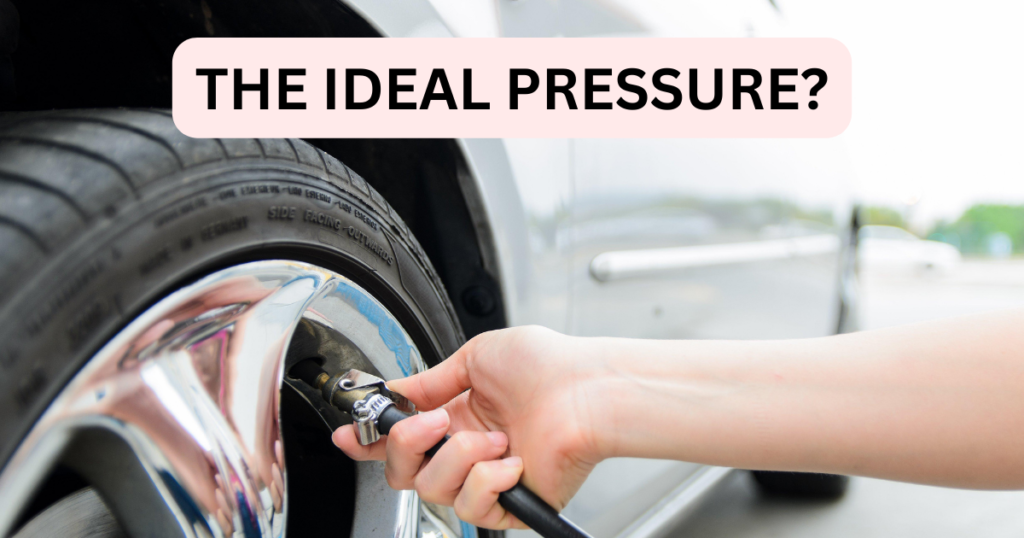
Tires require proper monitoring, care, and maintenance like any other car part. Tire pressure is one of the most vital components of a tire, the key to safe, functional tires. Safe tires depend on several factors, but one of the most important is the tire pressure.
Tires with the proper pressure provide more efficient gas mileage by maximizing traction and grip on all terrains. This article explains how to determine the optimal tire pressure for your SUV and what other factors should be considered when keeping tabs on tire pressure.
Keep pressure between 32 to 35 PSI. Any lower than 20 PSI, though, and you’ve got a flat tire. Consistently monitor your tire pressure and regularly fill your tires with air to keep them in that ideal 32 to 35 PSI sweet spot for better safety and mileage.
Correct Tire Pressure For SUVs
No universal pressure specification exists that matches every tire. However, as a general example, if you have an SUV with a low load, the number will be around 29-58 PSI. There are several things to consider when adjusting your air pressure.
- If you drive your SUV primarily on asphalt roads – and are not carrying a heavy load or driving for a very long time: Convenient places to check what your tire pressure should be on the door frames of the passenger and driver’s side or the fuel filler door.
- If you are carrying a heavy load and/or going on a long car trip: Always refer to the manufacturer’s handbook. It details the recommended pressure for the front and rear tires. This is the minimum air pressure required in cold tires to support your vehicle. Two figures will be seen, one for regular use and one for full loads. If you are still unsure, always consult a local tire professional.
Air pressure for Four Wheel Drive Tires
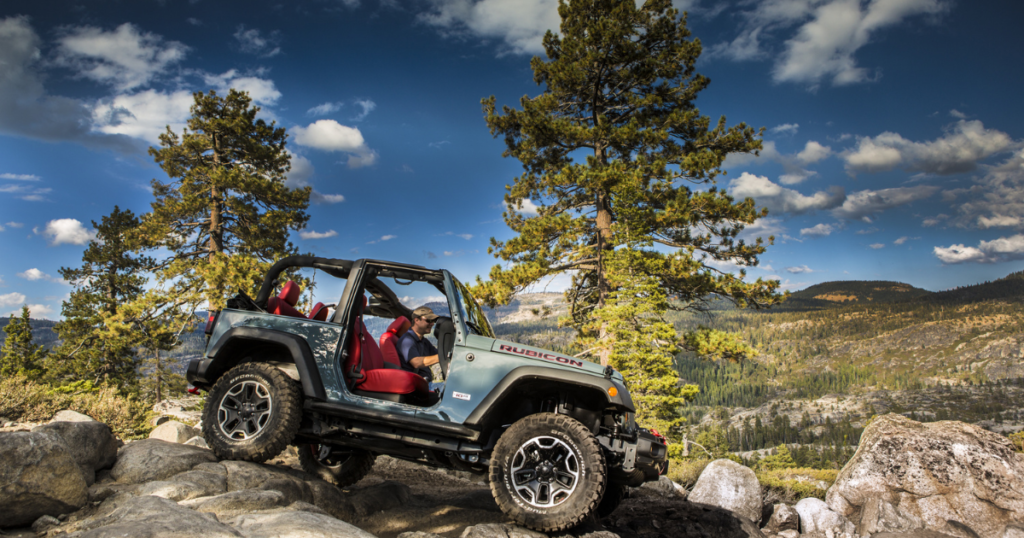
Just like any other vehicle, the recommended air pressure for 4WD tires can be found in the owner’s manual, on the door frame, and on the fuel filler door of your SUV. However, tire pressure should be lowered for off-roading.
This enhances the tire contact area over soft or uneven ground and lessens the bouncing on uneven terrain. This lessens the strain on the wheel bearings, improves handling, and decreases the likelihood of a flat. However, you can’t drive as fast because of the heat buildup in the tires with lower air pressure.
Tire Pressure Monitoring System
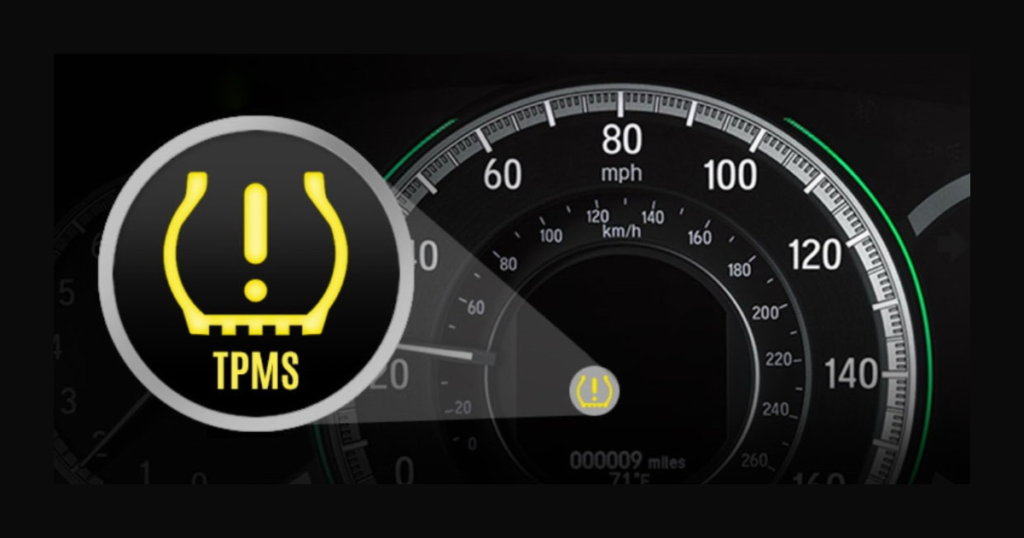
A 2008 or newer SUV will likely include a tire pressure monitoring system (TPMS). The sensors continuously monitor tire pressure and set off an alarm with a dashboard symbol when pressures fall dangerously low. In many countries, these are already mandatory, and newly manufactured cars are now equipped with them as standard.
What does it mean when the TPMS lights up? The pressure of all four tires must be checked. Although only one might need air, a thorough check is mandatory. It will also flash if a spare tire is in use and the vehicle cannot detect the sensor of the original wheel. There might be a TPMS system issue if you’ve tested all the tires and found nothing wrong with them.
While the TPMS is excellent in alerting you of punctures, you are still responsible for checking your tires so that you can respond in advance to issues like uneven wear or dangerously low tread. So check your air pressure even if you have a tire pressure monitoring system.
How To Check The Tire Pressure?
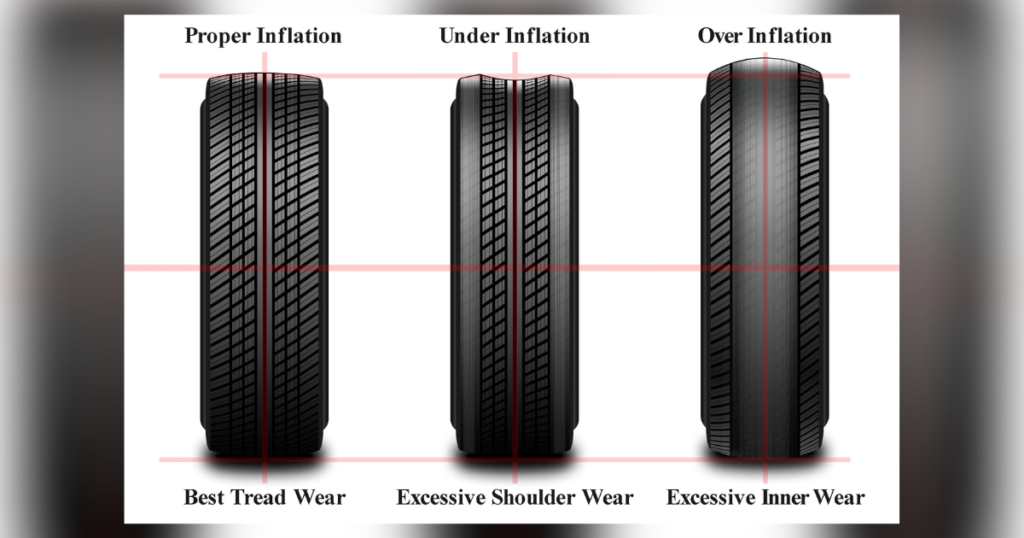
Every driver should know how to check their tire pressure. All you need is a tire pressure gauge. They are small and cheap, so it is good practice to always have one in your vehicle. To check tire pressure, the procedure is as follows:
- Wait for the tires to cool down: Hotter tires show higher pressure readings. If you drove the vehicle for more than 1 mile, wait for at least 30 minutes, but longer if you drove for more than 10 miles.
- Check the recommended tire pressure on the placard or in your vehicle’s owner’s manual: It should be similar for the front and rear tires, but in some cases, it will be different. Also, account for the load in your vehicle, i.e., passengers and cargo.
- Remove the plastic valve cap on the wheel: Unscrew it and set it aside safely.
- Place the tire pressure gauge on the valve stem: Make sure it seals properly without escaping air. If locking clips are present, lock them onto the stem.
- Ensure you read the gauge correctly: If you live in North America, look at the “psi” numbers, while people outside the continent should look at the “bar.”
- Inflate/deflate the tires if necessary: You’ll need a tire inflator kit, which should always be in your car.
- Once you are done reading/inflating the tire, reinstall the valve cap: It will keep debris from entering.
Tips for Tire Pressure Measurement
- As a rule, check your tire pressure:
- Every two weeks;
- Every time you set off for a long trip
- When carrying a heavy load.
- Make sure the tires are cold.
- A more accurate reading will be obtained if you check the pressure first thing in the morning when it has not been used or been in direct sunlight.
- When in doubt, refer to the vehicle’s manufacturer’s handbook.
- Use a reliable gauge and air compressor (you can buy one from an auto store or use one for free at a gas station).
- Check the pressure correctly. (Place the gauge onto the valve stem. Press down firmly until the hissing sound of air escaping stops. The gauge will show the pressure reading; ensure it matches the manufacturer’s recommendation. If too high, let out some air. If too low, use the air compressor to fill the tire till the recommended level.)
Factors Affecting Tire Pressure
Air Temperature
The lower the temperature, the more tire rubber contracts. This causes tires to lose pressure. This is a perfectly normal phenomenon. If the pressure hasn’t dropped too low, as you start and run the car, friction will cause the rubber to heat, and the tires will regain their pressure as heat expands the rubber. There is a 1-psi higher reading for every 10 °F increase in temperature.
Elevation
The relationship between the air in the environment and the air inside the tire creates the pressure level in a tire. When a car changes altitude, the external air pressure around it changes. Higher altitude means the air offers less resistance, creating a higher pressure level within the tire. So when climbing a mountain, the tire pressure increases by 1 psi for every 2,000 feet of elevation.
Slow Leak
Tires leak gradually for different reasons. These include a loose nozzle cap, tire damage, wrong alignment, or a cut that is not big enough to be a puncture yet but big enough to leak.
Puncture
Punctures can cause tires to lose air pressure immediately. However, in most cases, items that puncture tires remain lodged in the tire’s grooves, allowing air to release very slowly. This is especially true with small punctures.
Others
Other factors include:
- Premature wearing.
- Valve system failure.
- Wheel bead corrosion.
- Poor roads and potholes.
Where Can I find the pressure for my tires?
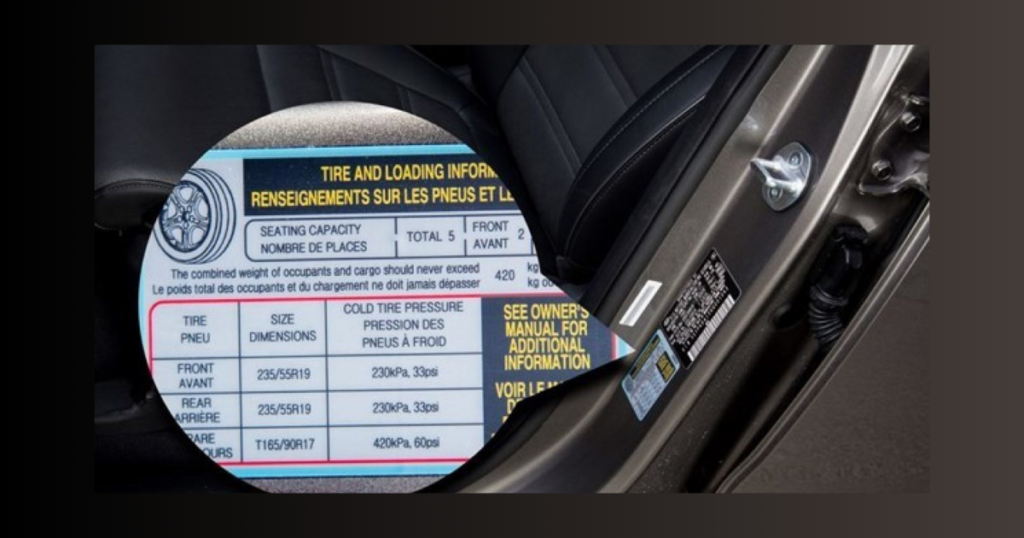
The recommended tire pressure for your car could be found in multiple places, including:
Tire Pressure Label
It is located on the driver’s door jamb (the area on a vehicle where the door connects to the car’s body), inside the fuel filler flap, or in the glove compartment. The label displays the recommended tire pressure for both front and rear tires under various load conditions.
Owner’s Manual
If you can’t find the sticker, refer to your vehicle’s owner’s manual to find the correct pressure for various loads.
Conclusion
The ideal pressure for an SUV will vary depending on the environment, where and how you are driving, and how much load you plan to take. However, the ideal pressure considered safe is between 32 to 35 PSI. It cannot be stressed enough that maintaining tires is essential in ensuring your safety and that they last in the long run.

